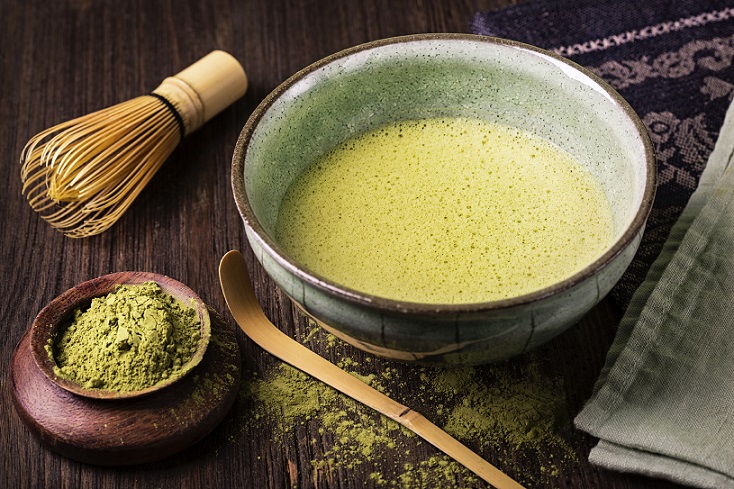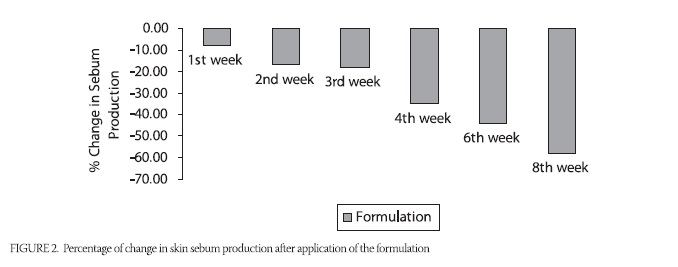 When I first started researching natural topical treatments for acne, as opposed to traditional pharmaceutical ones like benzoyl peroxide, I believed that there was only a handful of viable options. I thought that they were limited to the likes of aloe vera with its anti-inflammatory properties and raw honey with its endless antibacterial peptides produced by bees…
When I first started researching natural topical treatments for acne, as opposed to traditional pharmaceutical ones like benzoyl peroxide, I believed that there was only a handful of viable options. I thought that they were limited to the likes of aloe vera with its anti-inflammatory properties and raw honey with its endless antibacterial peptides produced by bees…
…but I’m happy to say that thousands of hours of research later, I couldn’t have been more wrong. There’s dozens if not hundreds of plants growing all over planet earth that have secret powers to reduce the symptoms of acne when applied topically.
Some of them, like witch hazel, have only been heard of by Native Americans and clear-skin experts. But some of them, like raw honey, might be sitting in your cupboard as we speak…
…and today we’re going to discuss another commonplace acne treatment that nobody usually bats an eyelid about: green tea.
The studies – green tea clears acne by 50%
Unlike some topical treatments such as raw honey, which are still excellent themselves, green tea has repeatedly been tested in studies directly on acne.
First we have this fantastic Iraqi study from 2006, where scientists compared a 2% lotion formulation of green tea to distilled water. The scientists gathered 60 patients, namely 35 females and 25 males. All subjects were aged between 14 and 22 years, the prime time of their lives for acne.
Group A was instructed to use the 2% green tea lotion twice daily, whereas group B used the control solution. Once the two months had passed, group B had virtually non-existent improvements in acne. There was no reduction in total papule or pustule counts…
…but in group A, total acne lesion counts fell strongly, and by ever increasing amounts as time rolled on.
For pustules, which are whitehead style pimples that can be burst, the average reduction in acne after four and eight weeks was 24% and 57% respectively. For papules, the scientific term for harder red pimples, the reduction was 9% and 32.5%.
Read Annihilate Your Acne – get the ultimate diet for clear and glowing skin!
Because the study was single-blind, meaning that neither group A nor B knew which topical treatment they had received, the scientists were able to conduct an honest, untainted questionnaire. The results were again superb. In the green tea group, 12% of patients were unsatisfied, 24% patients were partially satisfied, and 64% patients were fully satisfied. Furthermore, there were no side effects whatsoever.
In group B, the results were reversed; just 4.2% were fully satisfied, 12.5% were partially satisfied, and 83.3% were not satisfied at all.
Two years later in 2008, the same Iraqi team performed another single-blind study on green tea, which was even better.
Again, they used a 2% topical green tea lotion, but this time compared it to a 5% zinc sulphate lotion. Zinc is a top mineral for acne which reduces inflammation. Two groups consisting of 47 acne patients aged 13-27 were ordered to apply the formulations twice daily.
Clearly, the Iraqi scientists were impressed enough by their first study to press ahead with more research, and the results were not disappointing. The green tea lotion caused a reduction in pustule counts of 51% after eight weeks, and a reduction of 48.5% in papule counts. The reduction in papules was even better than the first study.
Meanwhile, the zinc sulphate formulation was moderately beneficial, as you would expect from zinc, but the reduction in acne lesions failed to reach statistically significant levels.
35% of the acne patients showed no response to zinc sulphate, 50% showed a moderate response, and 15% showed a good response. That’s decent enough, but compare it to green tea. 60% of all acne patients had a good response, with 25% being moderate and just 15% reporting no effects.
Once again, the green tea created no side effects whatsoever. The scientists hailed it as “a good alternative remedy to be used in the treatment of acne vulgaris”.
The mechanism – green tea inhibits androgen activity
The first of green tea’s acne powers is the stacks of antioxidants it contains, particularly the epicatechin class.
It’s believed that epigallocatechin gallate (EGCG), the signature antioxidant of green tea, is 25 to 100 times more potent than vitamin C and vitamin E. One cup of green tea provides more antioxidants than broccoli, spinach or strawberries. One study estimated that polyphenolic antioxidants form 30% of the weight of green tea leaves. By applying green tea to your face, your skin can absorb all these antioxidants like a sponge.
Green tea also has decent antibacterial property against p.acnes bacteria. One study compared green tea extract to two formulations derived from pomegranate and found that green tea was far more potent; it took 200ug for pomegranate to start inhibiting p.acnes, but 25ug for green tea.
Important article – the top 7 natural topical treatments for acne
Then there’s a study on actual human skin, which found that after eight weeks of regular application, EGCG from green tea substantially decreased the viability of p.acnes bacteria.
These powers are great, but what really seperates green tea from the pack its its ability to inhibit androgenic hormones.
Androgens are the main reason why pimples and acne first appear in the teenage years. The main two, DHT and testosterone, bind to sebaceous glands in your skin and stimulate them to pump out more oil (sebum).
However, a key point is that DHT is perhaps ten times more potent at this. All DHT in your body is manufactured from testosterone, via conversion controlled by the 5-alpha reductase enzyme. Therefore, it’s a smart idea for all acne patients to halt the activity of this enzyme…
…and that’s exactly what green tea can do. Green tea, more specifically epigallocatechin gallate (EGCG), has a well-established power to inhibit 5-alpha reductase and lower DHT, and is even popular in hair loss communities for that reason.
One excellent review found that EGCG extract strongly inhibited the 5-alpha reductase enzyme, and that this made green tea highly promising for “androgen-mediated skin disorders such as androgenetic alopecia, hirsuitism, and possibly acne”. Another discussed a wide range of polyphenolic antioxidants, and singled out EGCG specifically for its affect on 5-AR (the onion antioxidant quercetin was also mentioned).
Studies from inside the body have been promising as well, as this study observed that two catechins in green tea could inhibit type 1 5-alpha reductase: EGCG and epicatechin 3 gallate. This study found that EGCG from green tea could inhibit prostate cancer in rats by blunting the receptiveness of androgen receptors, the type of receptors also found in sebaceous glands.
Generally, I don’t recommend focusing too much on testosterone and DHT, as both are vital for health. Men require them for a sharp mind, sex drive, muscle mass and upbeat mood. The “problems” can be overcome with other lifestyle choices (e.g. vitamin E)…
…but inhibiting androgens directly on the skin doesn’t have these problems. Topical application of green tea will prevent DHT activity in a highly focussed manner, without affecting your health.
The result – green tea cures oily skin

The end result of all this is that green tea is a fantastic topical treatment for lowering sebum production.
Inhibiting DHT is the main pathway, but green tea is also known for directly reducing the size and activity of sebocytes, sebum-producing cells in the skin:
ONE – the same study which tested EGCG on p.acnes bacteria also found that EGCG could curtail sebum production.
Two mechanisms were given. Firstly, EGCG had substantial cytotoxic or cell-destroying powers against sebocytes. Secondly, EGCG could reduce the activity of the AMPK-SREBP-1 signalling pathway, which triggers sebum production.
TWO – this study found that EGCG could lower sebum production by inhibiting the growth of sebocytes, rather than killing them. It also decreased the sensitivity of sebum-producing cells to IGF-1, a powerful acne-causing androgen found in milk, and produced in humans as an offshoot of insulin.
It’s hard to tell whether this is entirely down to DHT, or whether green tea has bonus sebum-producing powers. But it doesn’t really matter, as since 2010, we’ve had an oily skin study directly on humans.
10 volunteers aged between 25 and 40 years were gathered, and were blindly handed a 3% concentration formula of green tea extract. The subjects applied the extract once daily for 8 weeks, and were examined at regular intervals.
The results? Here’s a graph that shows the percentage fall in sebum production, week by week:

Like with the studies directly on acne, green tea is superb at reducing oily skin, and the effect only intensifies the longer you keep using it. After just four weeks, sebum production had fallen by 35%; after eight weeks it had fallen by 60%. The continuous improvement may be explained by more and more sebocytes gradually being destroyed over time.
Bear in mind that unlike with acne lesions, you don’t need to bring sebum production down by 100%. Sebum is required for delivering nutrients and forming the acid mantle, a firewall against infectious bacteria. A reduction of 60% might be all you really need.
Finally, we have a similar 2013 study, where two groups were given either a green tea extract, or a green tea extract plus lotus.
For both groups, a “steady and statistically significant reduction in sebum secretion” was observed. The green tea plus lotus group performed better, but that’s irrelevant, as the only green tea group performed excellently too. The scientists concluded that green tea could be an effective treatment for skin disorders caused by elevated sebum production (acne, in other words).
The risk of side effects is tiny
We now have clear evidence that topical green tea can 1) slash oil production, and 2) slash pimple production. Are there any downsides to green tea?
The answer is potentially yes. Green tea is known to be one of foodstuffs highest in sodium fluoride, a highly inflammatory waste product that the human body has no usage for.
Levels of fluoride in green tea often exceed the daily safe intake; this study and this study detailed two drinkers who ended up with skeletal fluorosis, a form of fluoride toxicity. Fluoride is especially high in tea leaves because the tea plant has a tendency to pull it out of the soil.
Raw honey – a natural secret for wiping out acne bacteria
Applying this directly to your face could be bad news, but the raw facts are that the green tea study above found a 50% reduction in acne anyway. You cannot argue with that. In addition, it tends to only be bargain basement products that are seriously contaminated with fluoride, due to using older, poorer quality tea leaves.
Green tea also contains no known irritating plant chemicals, such as the 8-cineol found in tea tree oil. Nor does it have a record of allergies that bee kingdom remedies (raw honey and royal jelly) tend to.
The scientists in the first study said: “this is a new natural plant extract, which lacks any side effects”. Of course, they could have been bribed by a green tea company, but it seems that they weren’t.
Best product and usage guide
Is it possible to simply brew some green tea and splash it over your face? Probably not, as the catechin antioxidants are all there, but the shelf life in brewed green tea is poor.
Once brewed in water, levels of catechins (which includes the powerful EGCG) fall by 50-60% in 5-6 hours, at a room temperature PH. Adding vitamin C can extend the viability by several hours, but there’s little practical difference, because you can still barely store it overnight.
You could obviously apply the green tea to your face the second it’s brewed, but that’s highly inconvenient. You’d have to brew a fresh cup every day.
Some acne patients are also concerned about whether EGCG is absorbed when applied topically. Well, it clearly is, because the studies above all observed benefits. The law of 500 Dalton states that no molecule heavier than 500 Daltons can penetrate human skin pores, and EGCG has a Dalton weight of 458.
Stability is the problem with green tea, not absorption, and that’s why it’s smarter to use a dedicated topical treatment with a strong shelf life.
The only problem with green tea compared to more popular remedies is that the market hasn’t really developed yet. The great studies only appeared during the last decade, and unlike rose water or witch hazel, the ancient remedy crew hasn’t jumped on it yet. Most green tea products available combine it either with inflammatory additives or other natural ingredients that mask its effects (e.g. aloe vera)…
However, I did track down this pure essential oil type distillation: Swanson’s Green Tea Leaf (amazon link).
The only additional ingredients in this bottle are vegetable glycerine and purified water. You get exactly what you pay for – a green tea based topical treatment, with no extras that you’re not specifically interested in. Dab it on a cotton puff, or add some drops to a remedy of your choosing.
Remember to apply green tea consistently, as in the studies above, the benefits slowly gathered steam over several weeks.
The only problem with the product is its high price, so if you’re running low on cash, it’s smarter to start with a big bulk tub of Y.S. Eco Bee Farms Raw Honey (amazon link), which is highly antibacterial.
Conclusion
Green tea is easily one of the best topical treatments for acne in existence.
It works by slashing sebum production, mainly due to inhibiting androgens on the skin, by blocking the 5-alpha reductase enzyme. Therefore if you’re an athlete, a bodybuilder, or anyone who desires high levels of testosterone but wants to keep acne at bay, green tea is particularly excellent.
I’m personally hoping that over the next few years, these excellent studies spread, the topical acne industry detects the big opportunity for profit, and the number of pure green tea skincare products explodes.
NEXT: learn the root causes of acne, clear your skin permanently
Thanks for reading!
